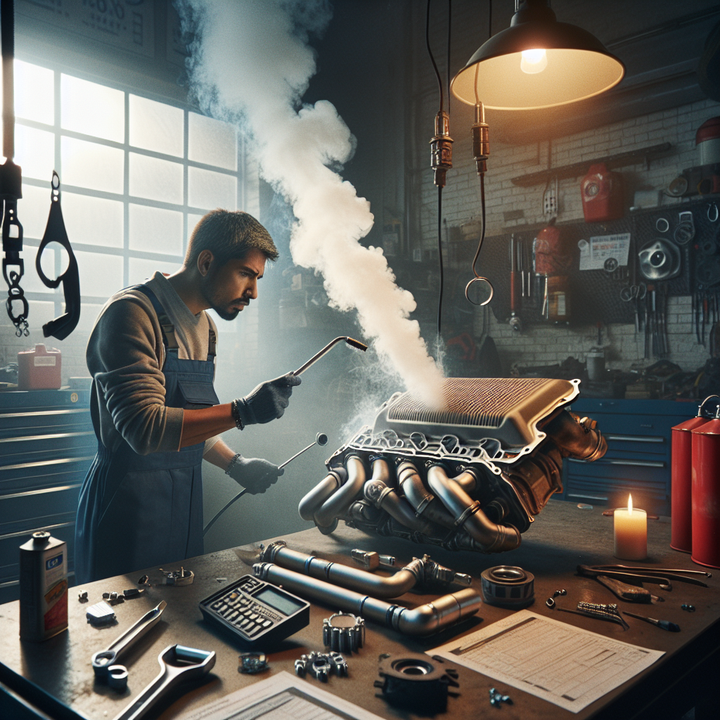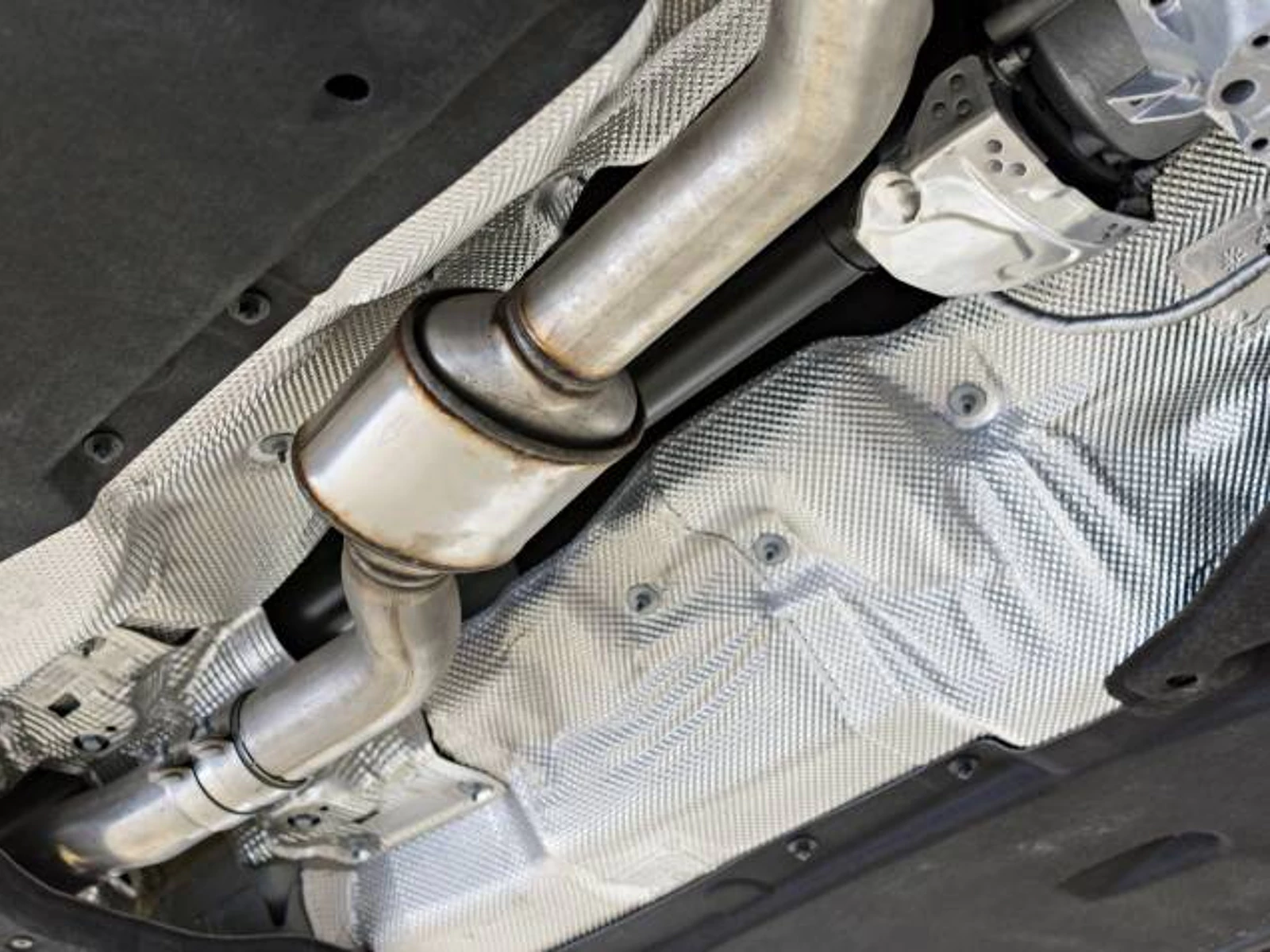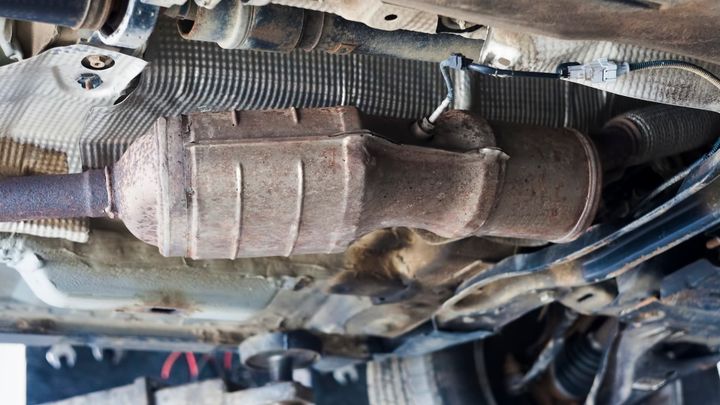


Catalytic converters have been an integral part of modern vehicles since the mid-1970s when they were first mandated by the United States Environmental Protection Agency (EPA) to reduce harmful emissions from gasoline-powered vehicles. The invention of the catalytic converter is credited to French mechanical engineer Eugene Houdry, who developed the device in the 1950s to address growing concerns about air pollution caused by vehicle exhaust.

The main causes of a catalytic converter smoking can be categorized into three primary groups:
| Cause | Description |
|---|---|
| Clogged Catalytic Converter | - Excessive unburnt fuel entering the converter due to engine misfires, faulty air/fuel mixture, or bad oxygen sensors can clog the converter over time. - Coolant or engine oil leaking into the exhaust can contaminate and clog the catalytic converter. |
| Overheating Catalytic Converter | - A rich air/fuel mixture feeding too much unburnt fuel to the converter can cause overheating and damage the internal components. - Exhaust restrictions from a clogged muffler or other blockages can increase backpressure and overheat the converter. |
| Physical Damage | - Road debris striking the underside of the vehicle can dent or crush the catalytic converter housing. - Internal damage from excessive vibrations or impact can break apart the catalyst material inside. |
One of the primary reasons for a catalytic converter to smoke is when it becomes clogged. This can happen due to excessive unburnt fuel entering the converter, which can be caused by engine misfires, a faulty air/fuel mixture, or bad oxygen sensors. Over time, this unburnt fuel can accumulate and clog the converter's honeycomb structure, restricting exhaust flow and causing smoke.
Another common cause of clogging is when coolant or engine oil leaks into the exhaust system. These contaminants can coat the internal components of the catalytic converter, leading to a buildup of deposits and eventual clogging.
A rich air/fuel mixture, which means too much unburnt fuel is being fed into the converter, can cause overheating and damage the internal components. This excessive fuel can ignite within the converter, raising its temperature beyond its designed operating range and potentially melting or cracking the internal structure.
Additionally, exhaust restrictions from a clogged muffler or other blockages can increase backpressure, forcing the exhaust gases to work harder to escape. This increased pressure and heat can also lead to an overheated catalytic converter, causing it to smoke.
Physical damage to the catalytic converter can also result in smoking. Road debris striking the underside of the vehicle can dent or crush the converter's housing, compromising its integrity. Internal damage from excessive vibrations or impact can break apart the catalyst material inside, leading to reduced efficiency and potential smoke.
To accurately diagnose the cause of a smoking catalytic converter, several diagnostic steps should be followed:
Visual Inspection
Exhaust Smoke Color Analysis
Catalytic Converter Efficiency Tests
The first step in diagnosing a smoking catalytic converter is to perform a visual inspection. I always start by checking for any dents, holes, or other physical damage to the catalytic converter and the entire exhaust system. Additionally, I look for signs of leaking coolant or oil, as these fluids can contaminate the converter and cause smoking.
The color of the smoke can provide valuable clues about the underlying issue:
| Smoke Color | Potential Cause |
|---|---|
| Black | Indicates a rich air/fuel mixture, which means excessive unburnt fuel is being fed to the converter. |
| Blue/Gray | Signals that the engine is burning oil, and this contamination is causing the converter to smoke. |
| White | May indicate that coolant is leaking into the exhaust and converter. |
To further diagnose the issue, I rely on various catalytic converter efficiency tests:
Using an OBD2 scanner to check for diagnostic trouble codes related to the catalytic converter, such as P0420 or P0430. These codes can indicate a potential problem with the converter's efficiency.
Comparing the upstream and downstream oxygen sensor readings. If there is a lack of fluctuation in the downstream sensor, it could indicate a clogged converter, as the exhaust gases are not being properly treated.
Performing a vacuum gauge test. Low vacuum readings at higher RPMs can suggest an exhaust restriction, which could be caused by a clogged catalytic converter or other issues in the exhaust system.
The repair instructions for a smoking catalytic converter will depend on the underlying cause:
For a Clogged Converter
For an Overheating Converter
For Physical Damage
If the catalytic converter is severely clogged, it will need to be replaced. However, before doing so, it's crucial to diagnose and fix the root cause first, such as misfires, oil or coolant leaks, or faulty sensors. Failing to address the underlying issue can lead to recurring problems and premature failure of the new converter.
In some cases, light clogging may be cleared by using a catalytic converter cleaner and running the engine at higher RPMs for an extended period. This can help dislodge and burn off some of the accumulated deposits. However, this is typically a temporary solution, and if the clogging is severe, replacement is the only viable option.
Proper installation and alignment of the new catalytic converter are also essential to ensure optimal performance and longevity.
If the catalytic converter is overheating due to a rich air/fuel mixture, the first step is to diagnose and repair any issues causing the mixture to be too rich. This could involve:

Replacing faulty sensors
Replacing faulty injectors
Addressing vacuum leaks
Additionally, if there are exhaust restrictions from a clogged muffler or other blockages, these need to be addressed to reduce backpressure and prevent overheating.
In cases of physical damage, such as a dented or cracked converter housing, replacement is the only option. It's important to note that there are no serviceable parts inside the catalytic converter, so any internal damage also necessitates a full replacement.
Preventive maintenance and proper driving habits are key to maximizing the lifespan of your catalytic converter and avoiding costly repairs.
Following the manufacturer's recommended schedule for:
Changing air filters
Changing spark plugs
Replacing oxygen sensors
Changing engine oil
Can go a long way in preventing issues that could lead to a clogged or damaged converter.
Additionally, promptly addressing any engine misfires, oil or coolant leaks, or other issues is crucial to prevent contamination and excessive unburnt fuel from entering the converter.
Driving habits also play a significant role in preventing catalytic converter problems:
Avoiding driving over large bumps or road debris can help prevent physical damage to the undercarriage and the converter itself.
Avoiding pushing the engine too hard when it's cold can prevent creating a rich air/fuel mixture and potentially overheating the catalytic converter.
The cost of repairing or replacing a catalytic converter can vary significantly depending on the make and model of your vehicle:
| Repair/Replacement | Estimated Cost |
|---|---|
| Catalytic Converter Replacement | $800 - $2,000 for parts and labor |
| Oxygen Sensor Replacement | $200 - $500 per sensor |
| Fixing Coolant/Oil Leaks, Misfires, or Other Root Causes | Varies significantly in cost |
| Using a Catalytic Converter Cleaner | $10 - $20 (temporary solution) |
Fixing underlying issues like coolant or oil leaks, misfires, or other root causes can also add to the overall cost, as these repairs can vary significantly in complexity and labor requirements.
As a mechanic, I've seen firsthand the importance of properly maintaining and addressing catalytic converter issues. Following proper maintenance schedules, addressing underlying problems promptly, and adopting good driving habits can go a long way in preventing costly repairs and maximizing the lifespan of your vehicle's catalytic converter.
If you notice smoke coming from your exhaust, don't ignore it. Seek professional assistance to diagnose the issue and take the necessary steps to repair or replace the catalytic converter if needed. Remember, addressing the root cause is crucial to prevent recurring problems and ensure the longevity of your vehicle's exhaust system.
By understanding the main causes, diagnostic steps, repair instructions, preventive measures, and cost estimates, you can be better prepared to handle catalytic converter smoking issues and keep your vehicle running smoothly for years to come.
Reduced engine power, difficulty accelerating, black smoke from the exhaust, and a glowing red-hot catalytic converter housing are clear signs that the catalytic converter needs to be replaced.
Yes, a clogged catalytic converter can trigger the check engine light due to increased exhaust backpressure and reduced efficiency detected by the oxygen sensors.
Oil or coolant leaking into the exhaust system can contaminate and clog the catalytic converter's internal components, leading to reduced efficiency and potential failure.
A rich air/fuel mixture with excessive unburnt fuel entering the converter, or exhaust restrictions causing increased backpressure, can lead to overheating and damage the catalytic converter.
Yes, a faulty oxygen sensor can provide incorrect air/fuel ratio readings, leading to a rich mixture and excessive unburnt fuel entering the catalytic converter, potentially clogging or overheating it.
Road debris striking the underside of the vehicle or excessive vibrations can dent, crush, or crack the catalytic converter housing or internal components.
Regular maintenance like changing air filters, spark plugs, oxygen sensors, and engine oil, as well as addressing any engine issues promptly, can help prevent catalytic converter problems.
Avoiding driving over large bumps or debris, and not pushing a cold engine too hard, can prevent physical damage and overheating of the catalytic converter.
A catalytic converter cleaner may provide a temporary solution for light clogging, but severe clogs will require replacement of the catalytic converter.
The cost for a catalytic converter replacement, including parts and labor, can range from $800 to $2,000 depending on the vehicle make and model.

Sarah isn't your average gearhead. With a double major in Mechanical Engineering and Automotive Technology, she dived straight into the world of car repair. After 15 years of turning wrenches at dealerships and independent shops, Sarah joined MICDOT to share her expertise and passion for making cars run like new. Her in-depth knowledge and knack for explaining complex issues in simple terms make her a valuable asset to our team.












